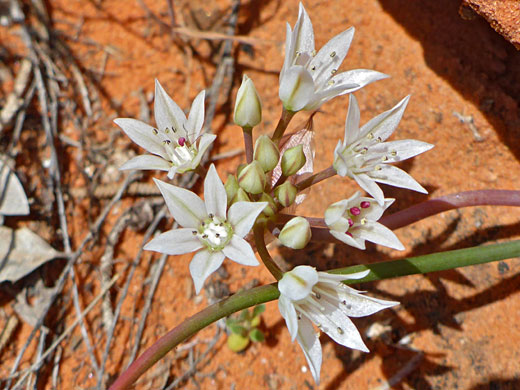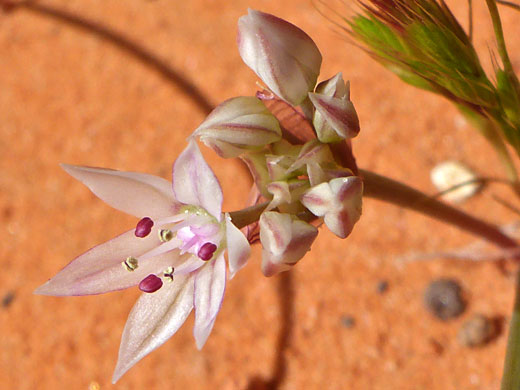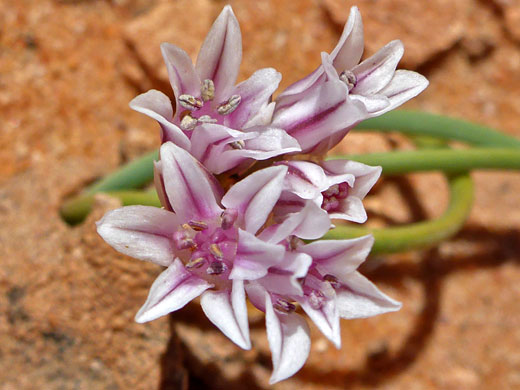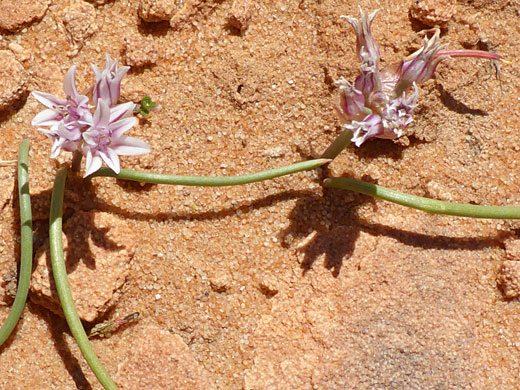Common names:
Nevada onion, single-leaved onion
Family:
Scientific name:
Allium nevadense
Main flower color:
Range:
Nevada and all neighboring states; east into northwest Colorado
Height:
Between 2 and 6 inches
Habitat:
Plains and slopes; rocky or sandy locations; 4,500 to 5,500 feet
Leaves:
Up to 8 inches, sheathed at the base, linear, cylindrical
Season:
April to June
The alternate common name of allium nevadense, single-leaved onion, reflects one of its identifying characteristics; plants have only one (occasionally two) leaves, which at flowering time are somewhat longer than the stem, and are coiled, and dry towards the tip. This species is found in sandy environments, in the Mojave and Great Basin deserts, and semi-desert areas of Utah.
The short, leafless stem is topped by a compact cluster of between 5 and 25 flowers, subtended by two or three equal-sized bracts, which are lanceolate in shape, pointed at the tip, and crossed by three to seven veins. Flowers are formed of six tepals, white or pale pink in color, with purple or brownish midveins. At the center are six stamens; white filaments and purple anthers, about the same height as the tepal tips.
The short, leafless stem is topped by a compact cluster of between 5 and 25 flowers, subtended by two or three equal-sized bracts, which are lanceolate in shape, pointed at the tip, and crossed by three to seven veins. Flowers are formed of six tepals, white or pale pink in color, with purple or brownish midveins. At the center are six stamens; white filaments and purple anthers, about the same height as the tepal tips.
All Contents © Copyright The American Southwest | Comments and Questions | Contribute | Site Map








